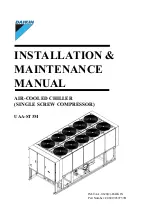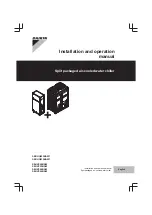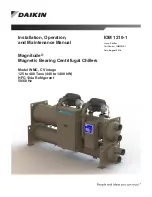
Figure 5: Plate type heat exchanger
The relatively high temperature solution streams from the two generators are used to preheat the
weak solution stream leaving the absorber.
Parallel flow
The unique parallel flow divides the solution between the low temperature generator and the high
temperature generator sections into two parallel, balanced paths. The result is a safer and more
efficient operation at a much lower pressure than conventional series-flow designs. The various
solution-to-solution plate type heat exchangers optimize efficiency by enabling effective heat
transfer between the diluted (weak) and the concentrated LiBr solutions.
High temperature generator (HTG)
YHAU’s HTG section has the unique liquid tube design where the dilute LiBr solution coming from
the high temperature heat exchanger is inside the tubes. The products of combustion (exhaust gas
from burning of natural gas) are on the shell side. The hot refrigerant vapor boiled off is sent to the
low temperature generator. This leaves behind a strong solution that is returned through the high
temperature heat exchanger.
The liquid tube design is efficient and compact with lower pressure drop as compared to the
conventional smoke tube type design where the exhaust gas is inside the tubes while the LiBr
solution is on the shell side.
The liquid tube design also benefits from less volume of LiBr solution and hence faster startup time.
It does not require any ceramic refractory compared to the conventional design, and this ensures
improved reliability.
Low temperature generator (LTG)
The hot refrigerant vapor from the high temperature generator heats up the dilute solution coming
in from the low temperature heat exchanger. This vapor then condenses into hot refrigerant liquid
and is sent to the condenser through the drain heat exchanger. The additional vapor produced in
the LTG by heating up the dilute solution is sent to the condenser.
The LTG is of a falling film design, ensuring superior heat transfer and enhanced life by eliminating
wear and tear at the tube supports.
Condenser
The cooling water from the absorber section enters into the condenser section. This helps
condense the refrigerant vapors produced in the LTG and the condensed refrigerant from the drain
heat exchanger. The liquid refrigerant is then sent back to the evaporator section through a U-pipe
(liquid seal).
17
Model YHAU-CGN/H-CXR(M)Double Effect Direct Fired Small Absorption Chiller-Heater
















































